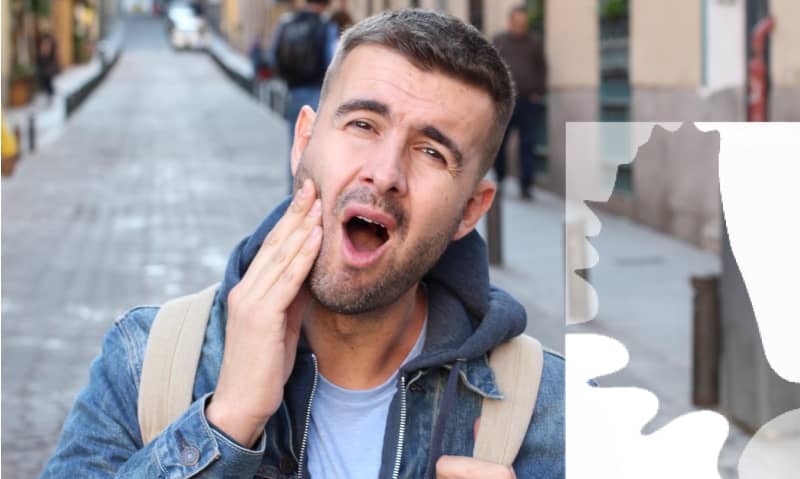Botox and Bruxism: What You Need To Know About Botox’s Relaxing Benefits

A Unique Way To Relieve Jaw Pain
There are many health and dental conditions that can lead to jaw pain, but bruxism is an all-too-common culprit. Also known as chronic teeth grinding, bruxism often appears to be a harmless habit. But the truth is that left untreated, it can have serious implications for your dental health, including chronic jaw pain, permanent tooth damage, and TMJ disorder.
The good news is that bruxism is manageable, and you don’t need to feel stuck living in discomfort. Today, we will introduce you to Botox, the ultrapopular wrinkle-smoothing injectable, as an effective method of relieving bruxism-related jaw pain and tense facial muscles.
Understanding Bruxism and Its Symptoms
Before we get into why and how Botox alleviates bruxism pain, let’s first refresh your memory on the basics of what bruxism is and why it develops.
Bruxism is a condition characterized by the grinding of teeth and clenching of the jaw, often occurring unconsciously during sleep or times of stress. Medical professionals believe bruxism is a result of physical, psychological, and genetic factors. It’s often linked to anxiety, alcohol and caffeine consumption, smoking, sleep disorders, and certain medications.
Symptoms of bruxism are diverse and can range from mild to severe. You might experience worn-down teeth, tooth sensitivity, or even damaged tooth enamel. The constant jaw clenching can lead to facial discomfort, jaw pain, headaches, and, in severe cases, TMJ disorders.
See an experienced dentist as soon as you recognize bruxism. The sooner you can start an effective treatment plan, the quicker you’ll get relief, and the more effective minimally invasive treatments like Botox will be.
Relaxing Benefits of Botox for Bruxism
Botox, or botulinum toxin, is best known for its cosmetic uses, but it’s much more versatile than you might think. In the context of bruxism, Botox serves as a muscle relaxant, working to alleviate the constant tension in your jaw muscles. But how does it do this?
When your dentist carefully injects Botox into the muscles responsible for teeth grinding, it interferes with the nerve signals that cause muscle contraction. The result? A significant reduction in the intensity of muscle activity leads to more relaxed jaw muscles and, ultimately, less grinding. What’s remarkable about using Botox for treating bruxism is its targeted approach. It deals with the problem right at the source without affecting your normal functioning, like talking, chewing, and making facial expressions.
Now, you might be thinking, “But isn’t Botox a toxin?” Well, yes, in large doses, it can be harmful. However, the amount used for medical procedures is extremely small and safe. Side effects are minimal, often limited to temporary mild bruising or slight discomfort at the injection site, and it’s considered a very low-risk procedure.
The Botox Process for Bruxism Treatment
Here’s a brief overview of what you can expect when receiving Botox for bruxism.
First off, your dentist will identify the key muscle groups involved in your teeth grinding. The masseter muscle, which bulges when you clench your teeth, is a common culprit. The temporalis muscle, which helps close the jaw, can also play a part.
After identifying the right spots, your dentist will administer the Botox injections using a small needle. While you might feel a tiny pinch, it’s generally not too uncomfortable. Some patients describe it as similar to a bug bite. The procedure is fast, too, typically taking just about 10-20 minutes.
Now, what about the results? Well, your jaws should begin to feel more relaxed within a week after the treatment. The full effect will typically kick in after 2 weeks, reducing the force of your jaw clenching and alleviating the associated pain. You’ll be able to talk, chew, and express yourself just as you did before, but without the constant jaw tension.
Keep in mind that Botox isn’t a permanent fix. It usually lasts about three to four months, and you might need to schedule follow-up injections to maintain the effect. That being said, many people find their symptoms are significantly reduced, or even disappear, in between treatments.
Manage your bruxism symptoms with Botox.
Don’t let jaw pain and teeth grinding hold you back from your daily activities any longer. Imagine a life where you can talk, chew, and express without constant tension and discomfort. This can be your reality with the help of Botox treatment.
Dr. Rob at Valley Dental Clinic near Anchorage, Alaska, is here to guide you on this journey toward better oral health and overall well-being. With his expertise, you can rest assured that you’re in capable hands, and the possibility of living a pain-free life is within your grasp. So why wait? Reach out to us today and discover if Botox is your ticket to managing your bruxism and reclaiming your comfort.